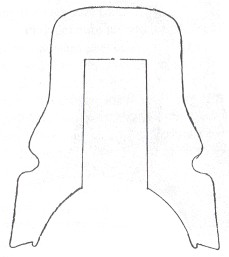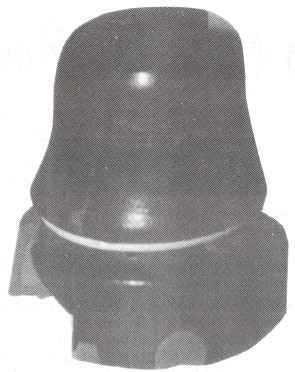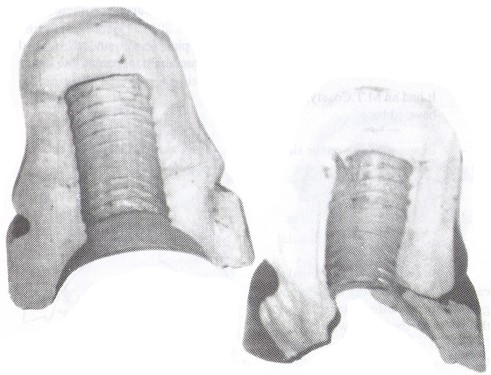News From The North
by Morgan Davis, Canadian Correspondent
Reprinted from "Crown Jewels of the Wire", November 1992, page 24
I love this hobby. Seems like just when you think you've seen it all, another
new item comes to light that rocks the insulator collecting world. Well, folks,
you have better sit down' cause here's the story of another NEW FIND!
Phil Ort of St. Catherines, Ontario, has been collecting insulators
since his teens. An ardent researcher, Phil is not content with merely
accumulating glass. He studies maps and histories of line construction and
enjoys the detective work involved in trying to put a puzzle together.
I got a call from Phil a couple of months ago. He told me had been digging a
railway line and had discovered a piece of a porcelain insulator that had three
pretty amazing features:
#1 - It had an M.T.Co. style beveled base
#2 - Incuse marking on the side of the dome was:
JOHNSON
MANCHESTER
#3 - It had a threadless pinhole!
Needless to say, I was excited and eager to see the piece, and Phil was good
enough to offer to take me out to the track to show me where he had located his
previously unknown insulator.
A couple of days later we met at a spot near the line, an 1850's Southern
Ontario railway. He had the piece with him -- about 1/3 of the insulator, very
finely made with a tan glaze reminiscent of a porcelain (CD143 glass style) that
was used in Canada.
Johnson (now called Johnson Brothers -- our dishes at home were made by
them!) of Manchester, England, is a large firm that has been around a long time,
supplying both domestic and industrial products. The insulator appeared to be
shaped like a CD 742 round dome variety or a CD 726 -- not enough of the dome
was there to be certain.

Base Diameter: 3-3/8"
Height: 3-7/8"
Pin Hole Length: 2-1/16"

The new threadless porcelain showing the clear incuse marking
JOHNSON
MANCHESTER
Below, the internal pinhole with the horizontally-scored lines.

The pinhole was smooth, but had lines scored on it, apparently to better grip the pin. My first thoughts were that this was a later edition of
threadless -- perhaps a replacement model.
Phil's theories echoed my thoughts. He
had located the piece at a pole site next to a river. In this one spot, Phil had
also found numerous pieces of insulators covering a wide span of time. These
were an aqua 740, a Foster Brothers, many CD 742 shards, a double threaded, a
curved-under base CD 143, along with more modem insulators. The sheer quantity
at this pole suggested to Phil that its location by the river had some bearing
on the amount of replacement maintenance that was required.
...Perhaps Dad took the family
fishing and the kids got bored... many Dads and many kids over the years...
lotsa stones lying around... well, you get the picture.
After checking many pole sites and finding no other pieces, I was confident
that this insulator was not used in the construction of this line, but rather as
a replacement for a very limited time and for a very specific application --
making it a very rare find.

Phil (picture above) has returned to this site and
after hours of hard work has found pieces of three separate examples of this new
find. Enough of the bases have been found to insure that they were not embossed
there (we speculated about an M.T.CO. marking) but the Johnson Manchester is
clear. WHAT A FIND!
Phil is committed to search out the missing fragments and
piece together a whole example of this previously undiscovered item. If he is
correct about the way these insulators met their demise, the pieces could be
scattered over a wide area. Good luck, Phil!
| 